Known for Sculptor Name Nancy Prophet | Period Harlem Renaissance | |
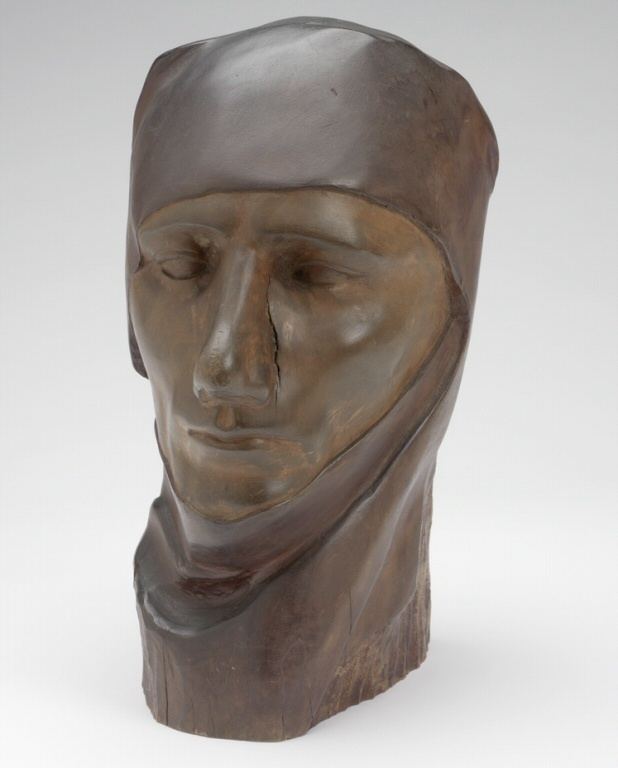 | ||
Nationality African American, Native American, Narragansett Education | ||
Sylvia ann soares as nancy elizabeth prophet diary reading clip 30 as220 2014
Nancy Elizabeth Prophet (March 19, 1890 – December 13, 1960) was an American sculptor. She became noted for her work in Paris in the 1920s and 1930s. A perfectionist who did all her own carving, her surviving output is small.
Contents
- Sylvia ann soares as nancy elizabeth prophet diary reading clip 30 as220 2014
- It is Just Defiance Reading by Sylvia Ann Soares
- Biography
- Exhibitions
- Depictions
- References
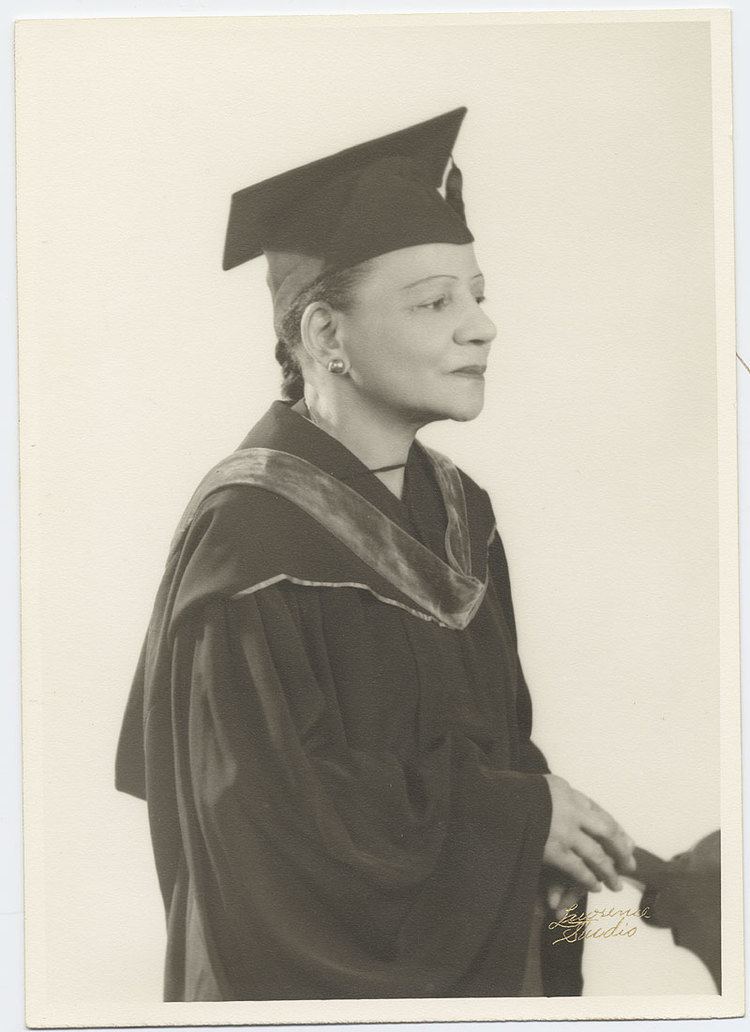
It is Just Defiance - Reading by Sylvia Ann Soares
Biography
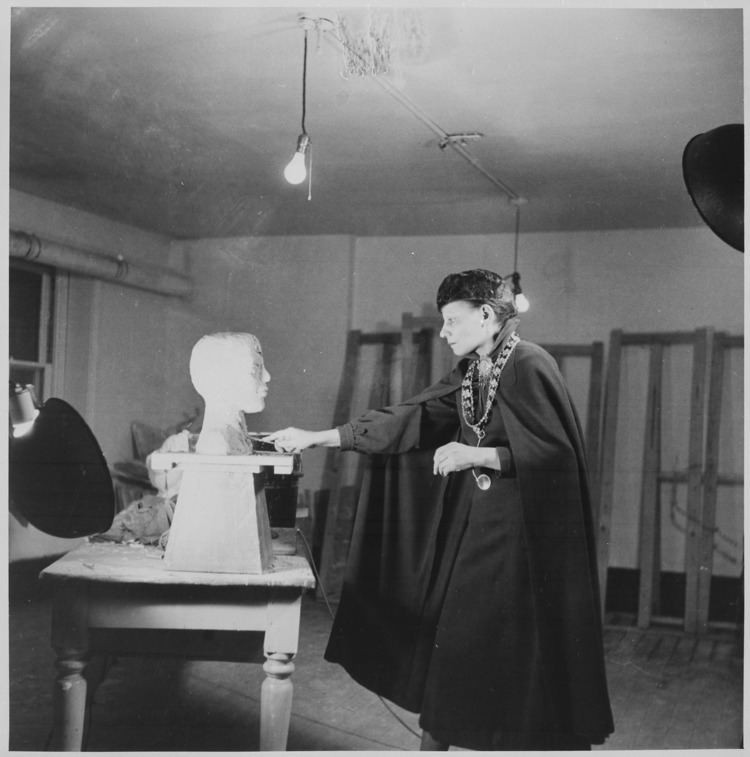
Nancy Elizabeth Prophet was born on March 19, 1890, to William H. Prophet and Rose Walker Prophet, in Warwick, Rhode Island. Her parents were of mixed Native American and African American ancestry; her father was Narragansett.
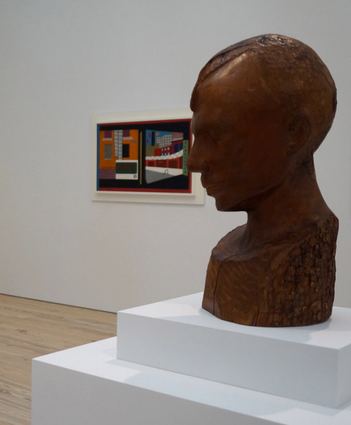
In 1914, at the age of 24, Prophet, a high school graduate who had worked for several years as a stenographer in a black lawyer's office, enrolled in the Rhode Island School of Design in Providence, Rhode Island. In 1915 she married Francis Ford, who had briefly attended Brown University. They had no children and separated in 1932. While at RISD Prophet studied painting and free-hand drawing, especially portraiture.

After her graduation in 1918 she tried to make a living as a portrait painter, but times were hard in Rhode Island at the end of the Great War. There was racial segregation in relatively liberal Providence (which had integrated its public schools in the 1860s), and theaters and restaurants had whites only sections. Although there is no documentary proof of the incident, she later told the poet Countee Cullen that she had exhibited a piece in Providence, which was accepted on the proviso she not attend the opening of the exhibition, so she withdrew the piece.

Prophet moved to Paris in 1922 to study sculpture. Most of the evidence for the twelve years she spent in France comes from her diary, a forty-six page hand written manuscript, in which she portrays periods of intense activity contrasting with periods of extreme depression. Although she claimed to have studied at the École des Beaux-Arts, they have no record of her, and she probably studied at one of the connected ateliers. Her bust "Silence" reflected what she described as "a long emotional experience, of restlessness, of gnawing hunger for the way to attainment" during this time in her life.

One of Prophet's finest surviving works dates to this period: Negro Head, a larger than life size wooden sculpture, which a niece of Frank Ford identified as her Uncle Frank. Prophet exhibited at the Salon d'Automne and the Societe des Artistes Francais in Pairs. W.E.B. Du Bois and Countee Cullen helped submit her work to exhibitions in the United States as well. Prophet won the Harmon Prize for Best Sculpture in 1929.
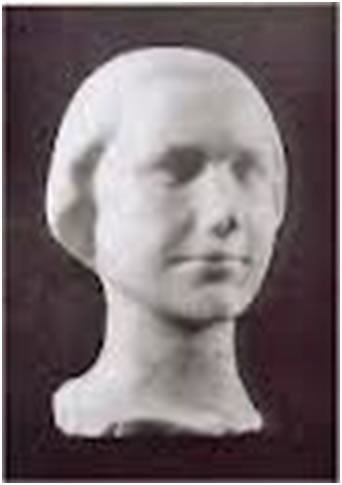
Returning to the United States in 1932, Prophet saw her work continue to gain attention. She was invited to exhibit her art in galleries located in New York and Rhode Island. She won the Best in Show prize from the Newport Art Association in 1932. In 1935 and 1937, she participated in the Whitney Museum Sculpture Biennials, and the Sculpture International exhibition at the Philadelphia Museum of Art in 1940. Her sculpture "Congolaise" became one of the first works by an African American acquired by the Whitney.
Prophet moved her studies down to Atlanta, Georgia, and began a career as a professor teaching art students enrolled at both Atlanta University and Spelman College in 1934, in hopes of encouraging the creative minds of youth, the encouragement she was not presented with during her early years. At Spelman, she developed the curriculum in fine arts and art history and welcomed students to her own home.
In 1945, Prophet returned to Rhode Island to escape the racial segregation and rejection she had faced in the South. Prophet became a Roman Catholic in 1951. She attempted to regain her status as an artist but had to turn to other employment, including in a ceramics factory and as a domestic work. Her exhibit at the Providence Public Library proved to be the last during her lifetime. Nancy Elizabeth Prophet died in 1960.
Exhibitions
Depictions
In conjunction with a series of events in Providence, RI on Prophet's life and work in April 2014, actress Sylvia Ann Soares performed dramatic readings from Prophet's Paris Dairies, 1922-1934, in a performance titled The Life and Art of Nancy Elizabeth Prophet: Calm Assurance and Savage Pleasure. The diaries which served as the source material for the performance, cover Prophet's twelve years in France, and are currently held by Brown University’s John Hay Library.
Later that year, Soares reprised the role of Prophet in "It is Just Defiance": A Living History of Nancy Elizabeth Prophet's Paris Diaries, which covered Prophet's time in Paris during the mid 1930s.
